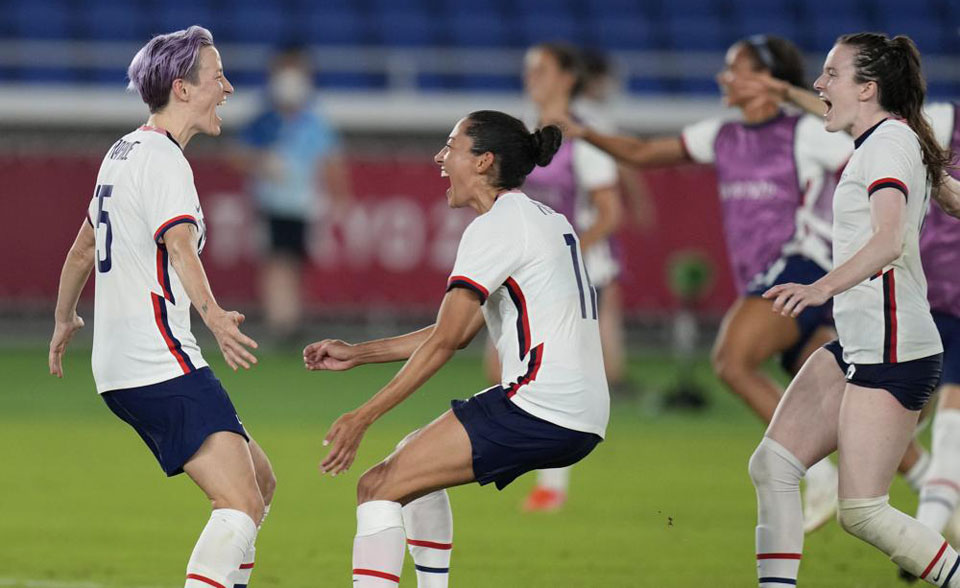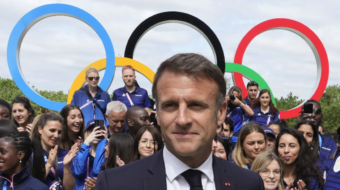
It’s been said trouble will always find you and will come at you from any direction. Be it good trouble or bad. What matters most is how hard you fight back. And if you get knocked down, that you get right back up.
The U.S. women’s national team has seen a slew of championship wins and some shattering losses. They crashed out of the Tokyo Olympic Games with a 1-0 loss to our neighbors up north (Canada) Monday, Aug. 2, ending their hopes for taking gold following their 2019 World Cup title.
Suffice it to say the game was chaos. And while this tourney has come to an end, another fight—with a prize greater than a Gold Medal—the U.S. women’s national soccer team began back in 2016 moves to the next round.
In their ongoing fight for equal pay, the USWNT filed its opening brief, Friday, July 24, as the team was in Japan for the Olympics.
Over a year had passed since U.S. District Judge R. Gary Klausner tossed out the women’s team’s claim of unequal pay in May 2020. He ruled the USWNST could not claim discrimination because it had agreed to a differently structured union contract that prioritized stable salaries over per-game bonuses.
Twenty-eight current and former players had sued U.S. soccer in 2019, arguing the federation had underpaid them compared with the men’s team, who are far less successful.
“The WNT [Women’s National Team] rejected an offer to be paid under the same pay-to-play structure as the MNT [Men’s National Team] and … the WNT was willing to forgo higher bonuses for other benefits, such as greater base compensation and the guarantee of a higher number of contracted players,” wrote Klausner. “Accordingly, Plaintiffs cannot now retroactively deem their CBA worse than the MNT CBA by reference to what they would have made had they been paid under the MNT’s pay-to-play structure when they rejected such a structure.”
But the fight wouldn’t end there.
“We believe in our case and know our value,” Megan Rapinoe said in a statement. “It’s time the U.S.S.F. does too.”
In the USWNT court filing, they argue Klausner’s decision was “based on a flawed analysis of the team’s compensation, despite the abundant evidence of unequal pay.”
It continues: “In effect, the court held that pay is equal if a woman can obtain the same amount of money as a man by working more and performing better. That is not the law.”
Player spokesperson Molly Levinson panned the ruling, saying, “If a woman has to work more than a man and be much more successful than him to earn about the same pay, that is decidedly not equal pay and it violates the law.
“And yet, that is exactly what the women players on the US National team do — they play more games and achieve better results to be paid about the same amount as the men’s national team players per game. By any measure, that is not equal pay, and it violates federal law.”
U.S. Soccer tweeted out a statement addressing the player’s appeal, taking Klausner’s side in the matter (as expected):
“The District Court rightly noted that the Women’s National Team negotiated for a different pay structure than the Men’s National Team, and correctly held that the Women’s National Team was paid more both cumulatively and on an average per-game basis than the Men’s National Team.
“We will continue to seek a resolution to this matter outside of court so we can chart a positive path forward with the players to grow both here at home and around the world.”
So where does the U.S. men’s team stand on all of this?
They back the USWNT in their fight.
The U.S. National Soccer Team Players Association, the union representing the men’s team, filed an amicus curiae (friend of the court) brief supporting the appeal.
In their brief, the union said U.S. Soccer has “persistently treated the women as a second class throughout the 35-year history of the Women’s National Team.
“The Federation has tried to portray the women as too demanding and claimed that players in other nations have it worse. But the Federation’s long-standing—and ongoing—disparate treatment of the U.S. Women’s National Team players is not absolved merely because the Federation has put some money into women’s soccer or because other nations lag.”
This fight for equal pay is far from over.
And, “Anyone who knows this team knows that we do not give up until we win,” says USWNT forward Christen Press.












Comments